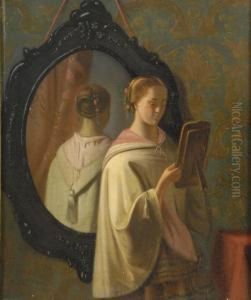Marie Van Gogh Paintings
Marie Van Gogh, whose full name was Maria Cornelia Van Gogh, was not widely recognized as an artist herself, but rather was known for her connection to her more famous brother, Vincent Van Gogh. Born on May 16, 1862, in Zundert, Netherlands, she was one of six children, including Vincent, in the Van Gogh family. Her father was a Dutch Reformed Church minister, and her upbringing was modest, with a focus on family and religious life.
Marie, often called 'Wil,' led a life that was largely overshadowed by the fame and tragic life of her brother Vincent, who became one of the most famous and influential figures in Western art history. Details of her own life are scant as she did not attain the fame of her brother, and thus her biography is often intertwined with the lives of her brothers, Vincent and Theo. It is known that she maintained correspondence with her brothers and was involved in Vincent's life, although to a lesser extent than her brother Theo, who was Vincent's closest confidant and supporter.
After Vincent Van Gogh's death in 1890, Marie, along with other family members, would have been involved in the preservation and promotion of his legacy. This was largely undertaken by her sister-in-law, Johanna Van Gogh-Bonger, who was instrumental in cataloging Vincent's works and correspondence, and making them accessible to a wider audience, which eventually led to his widespread recognition.
Marie lived through both World Wars, witnessing significant changes in Europe and the world. She passed away in 1941, having lived a life that was, in many respects, typical of many women of her era, whose personal achievements and stories were often eclipsed by the activities and fame of their male relatives. Unfortunately, due to the lack of documentation and scholarly focus, Marie Van Gogh's individual biography is not as detailed as that of her brother, and her own pursuits and achievements outside of her connection to Vincent remain largely unchronicled.
